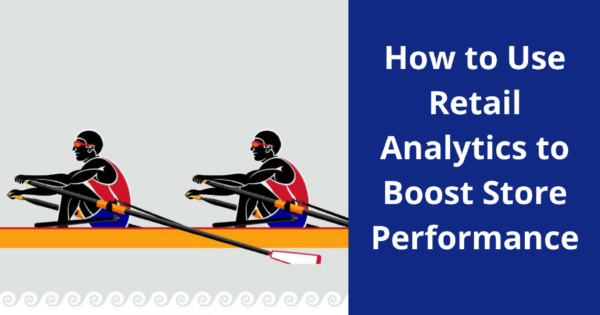Have you taken the time recently to analyze your stores performance in a systematic way to see how well you are performing in different areas of operation? Are you failing to meet your retail revenue goals but Not sure where you need to focus your time and attention?
With the help of retail analytics, you can fully understand how multiple variables are affecting your store revenue and make effective modifications that will give your store the performance boost it needs to stay competitive and thrive long-term.
Analyzing your store’s data can provide you with valuable insight as to how well your store is performing and what you can do to boost your bottom line and improve overall performance. Ready to get a basic primer on the most common retail analytics data and why you should gather and use it? Let’s go!
[xyz-ihs snippet=”TOFU2-Retail-Technology-button”]
Common Types of Retail Analytics
Some of the areas where retailers commonly analyze their data include:
- Predictive analysis
- Promotion and price modeling
- Marketing mix modeling
- Stock-keeping optimization and store assortment
- Enterprise decision management
- Marketing optimization
- Predictive science
- Web analytics
- Sales force sizing
- Credit risk analysis
- Fraud analytics
The types of analytics your company captures will depend on the approaches that will deliver the most value quickest.
To successfully deploy analytics, retailers must choose the approach that best matches their branding, business strategy and operational capabilities. Low-cost retailers, for example, can drive value with supply chain and pricing analytics that focus on wringing costs from their systems. High-end companies that value long-term customer relationships tend to do better with customer-driven marketing and loyalty programs.- Thomas H. Davenport, TeraData Magazine
An essential ingredient of a successful retail analytics program is the consolidation of a large number of different data points into easy to interpret and visually descriptive spreadsheets, charts and reports. By using current retail analytics tools that combine all of the latest algorithms and computations, you can configure an analytics report that provides critical insights into the performance of different parts of your retail store.
All of the data gathered allows you to develop sound marketing strategies and operating decisions. These areas include:
- store layout
- product mix and stock levels
- staffing levels
- promotions
- managing customer wait times
- fitting room policies
Analytics combines a variety of data sources into usable information that store management can use to guide future strategies and actions that will improve performance. Since the data gathered will vary between stores, it can help you pinpoint changes that need to occur at both a macro level – company wide as well as a micro level – at each store location.
Get Started with Retail Analytics Now!
Imagine how much data you are missing out on by neglecting to look into the analytics of your retail establishment. Making use of retail analytics is not optional in today’s competitive retail world. Making small modifications based on analytics data could result in considerable performance improvements over time.
[Tweet “How to Use Retail Analytics to Boost Store Performance #retail @alerttechinc”]
Retail analytics combines the science and power of technology with the art and strategy of retail business management and marketing. Capturing, evaluating, and taking action based on analytics data will help your retail business uncover a winning formula.
[xyz-ihs snippet=”TOFU2-Retail-Technology-button”]
Conclusion
When you know where your business is failing and where it is succeeding, you can help to increase performance and minimize loss. Once you delve into retail analytics and fully understand what your business needs, you will begin to see a difference in your bottom line.
If you are ready to learn more about retail analytics basics and how they can improve performance, download our whitepaper, “In-store Apparel Retail Analytics: Beyond People Counting”.
[xyz-ihs snippet=”TOFU2-Retail-Analytics”]

